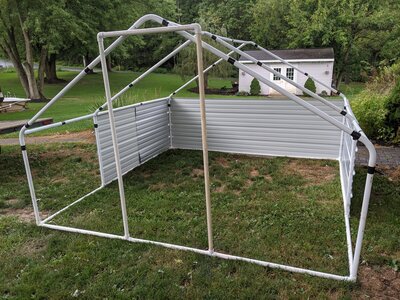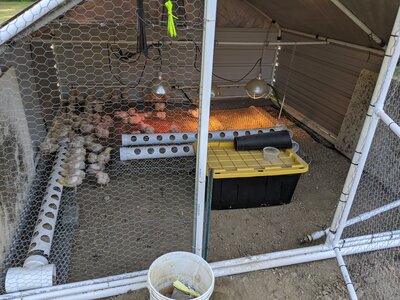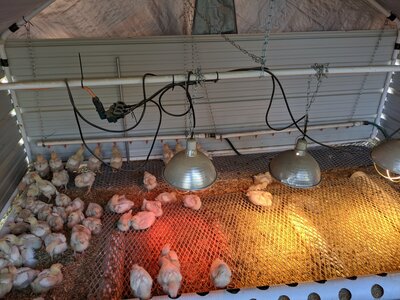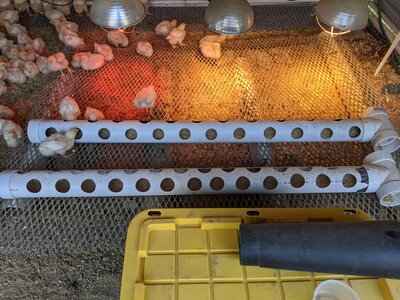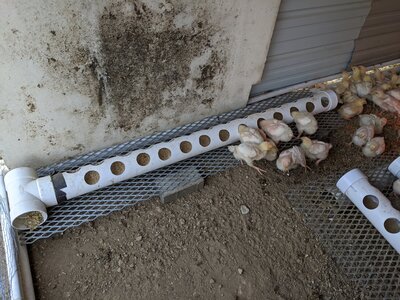I have 75 CX's coming next week and am building a new grow pen for them. In the past I've used our garden shed as the brooder until week 3 or so. Then I move them to small grow pens. 20-25 birds per pen. Now the shed is getting too full of stuff so won't work for the brooder. I'm building a combination brooder/grow pen for this batch. It'll work for up to 100 birds.
When I use the smaller pens I move them each day for fresh grass & manure control. This new pen will be light enough to move but I'm considering other options. One is to just park it in our garden and lay bread crates in upside down to make an elevated floor. From day 1 through week 3 or so I'd put down some of those foam mats from Harbor Freight so their feet don't get irritated by the crates. They'd also only have access to half of the pen. Once they start producing more manure and their feet are bigger I'd just remove the mats and then their droppings would just fall through the holes in the crates. Anyone tried something similar before? I'd be interested in hearing feedback.
When I use the smaller pens I move them each day for fresh grass & manure control. This new pen will be light enough to move but I'm considering other options. One is to just park it in our garden and lay bread crates in upside down to make an elevated floor. From day 1 through week 3 or so I'd put down some of those foam mats from Harbor Freight so their feet don't get irritated by the crates. They'd also only have access to half of the pen. Once they start producing more manure and their feet are bigger I'd just remove the mats and then their droppings would just fall through the holes in the crates. Anyone tried something similar before? I'd be interested in hearing feedback.

